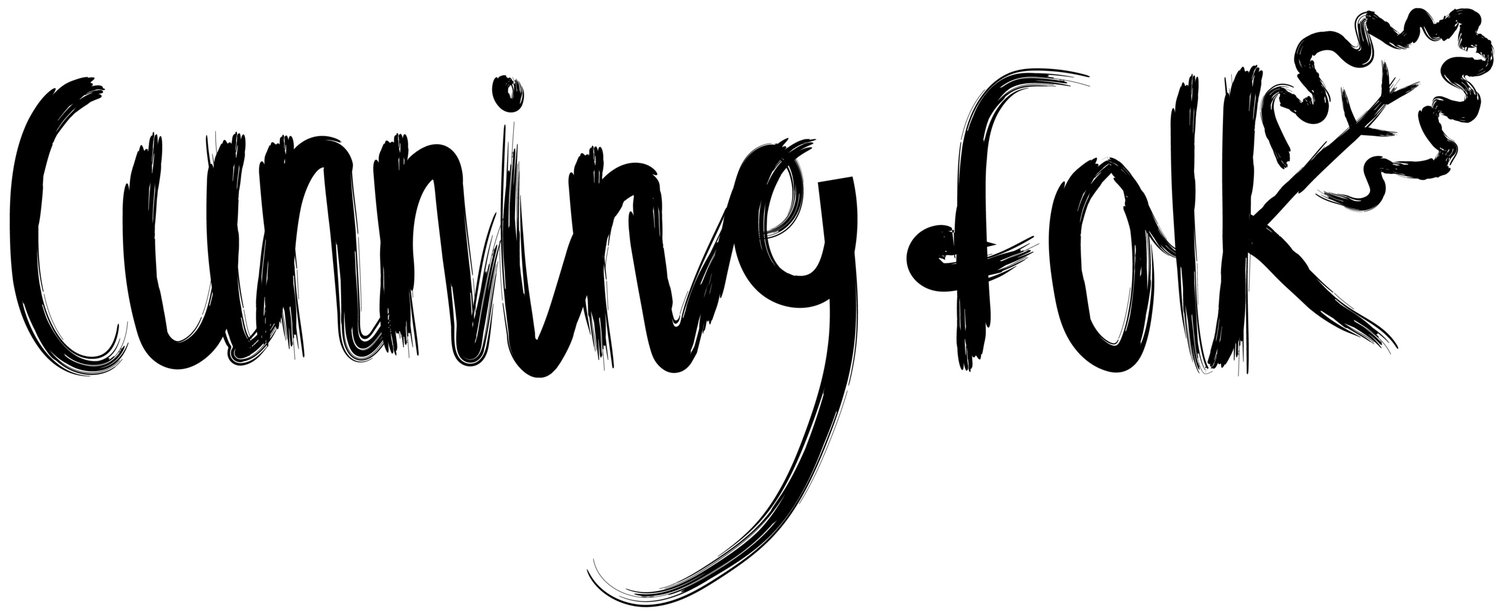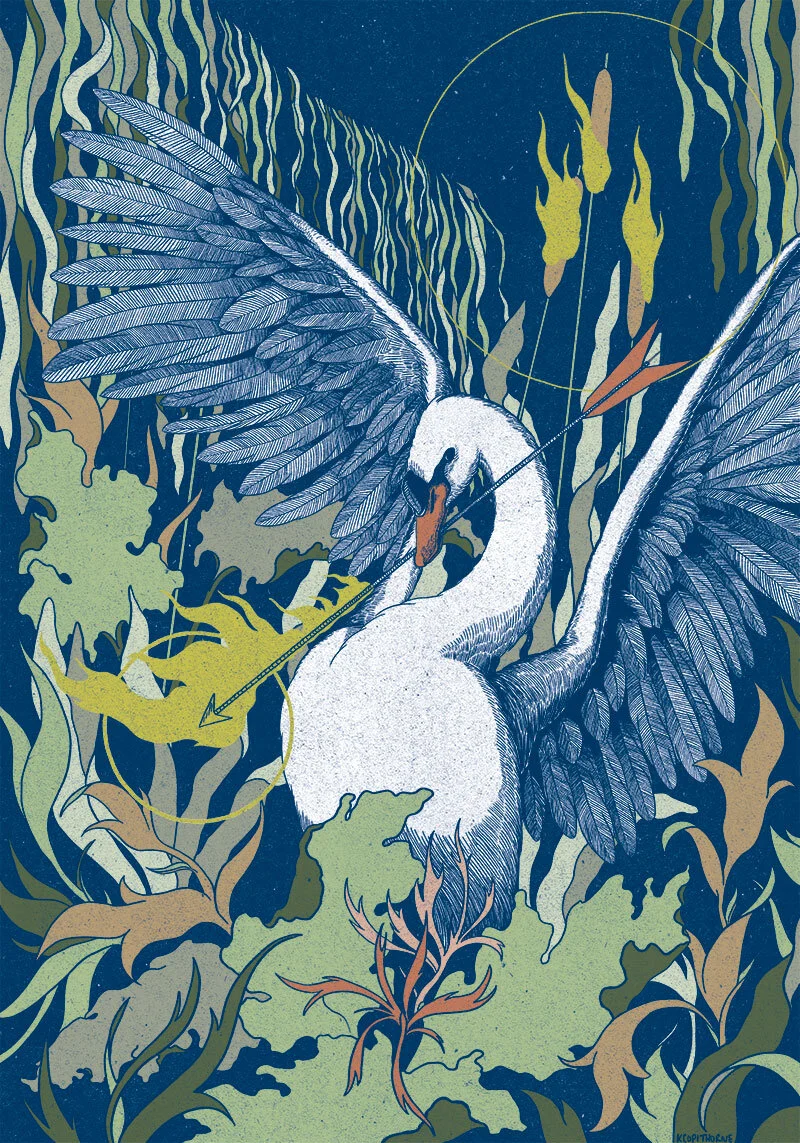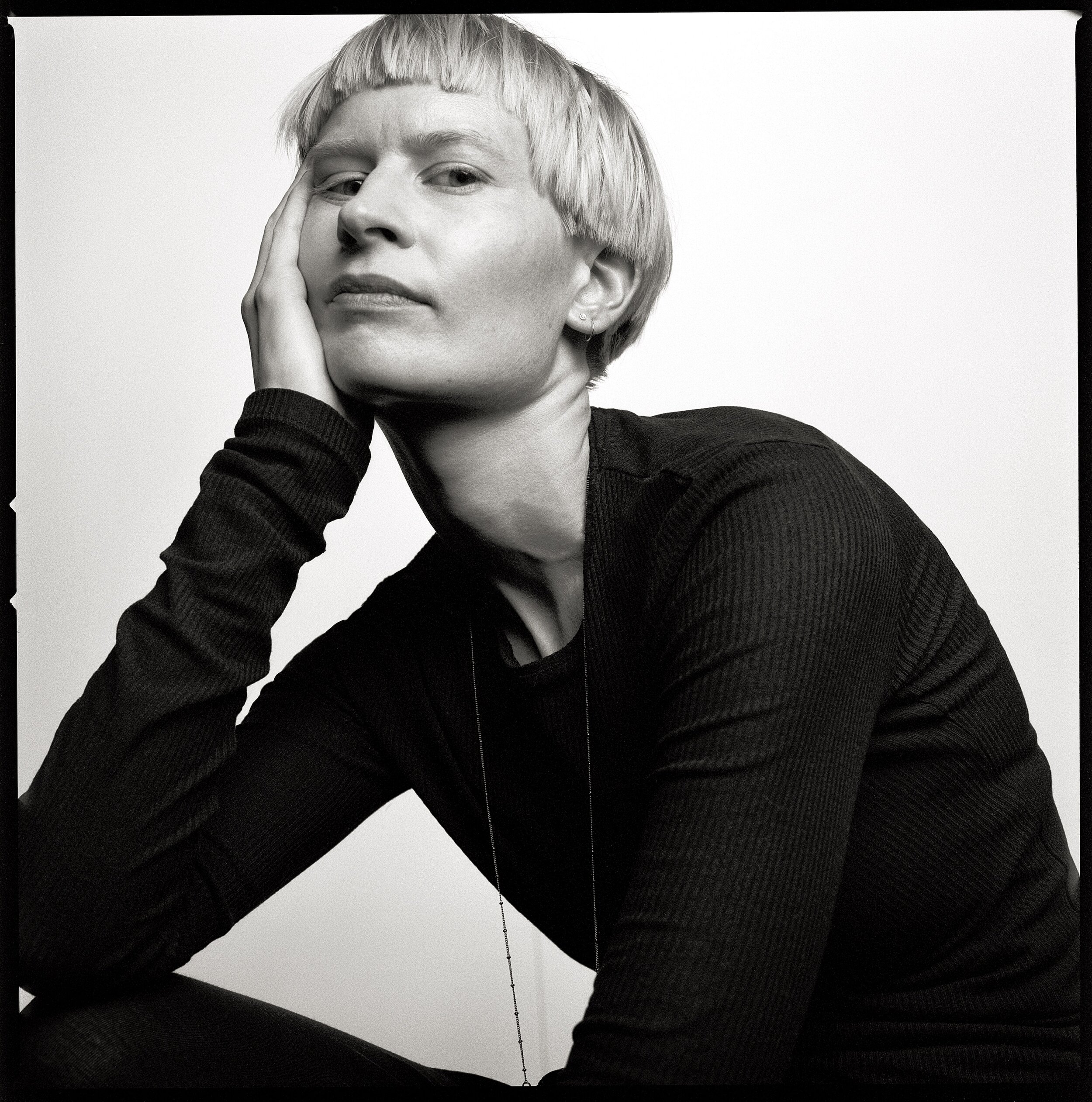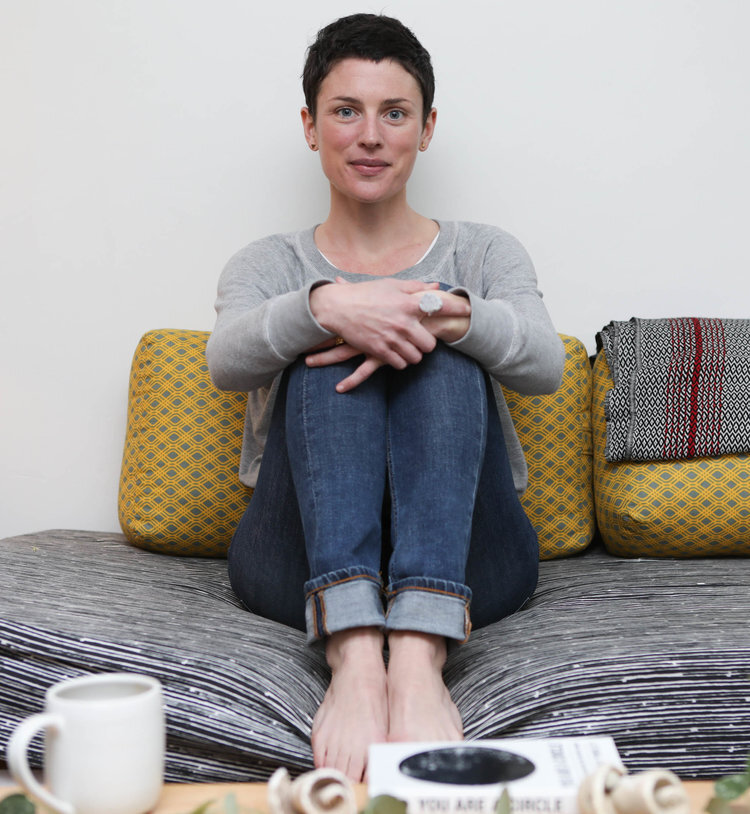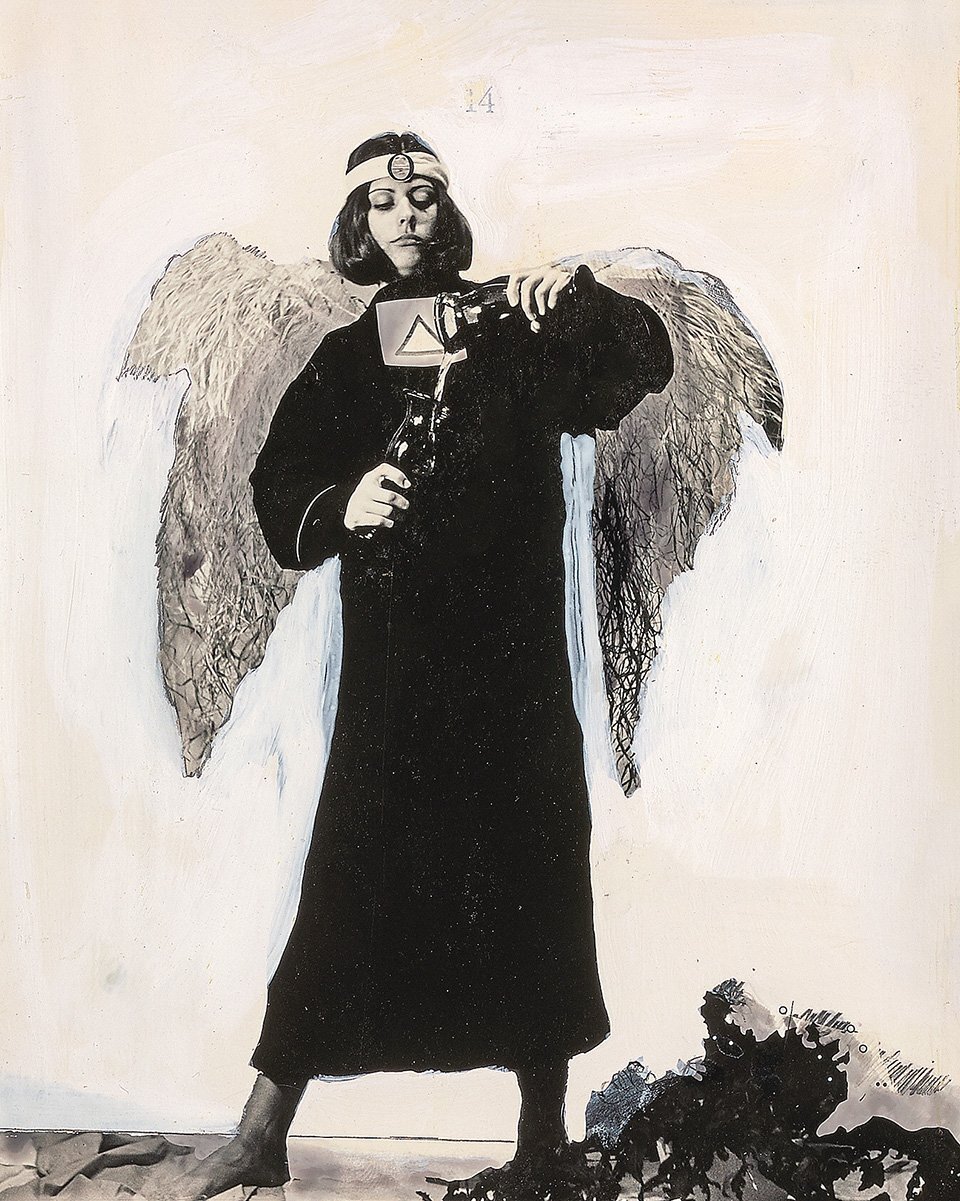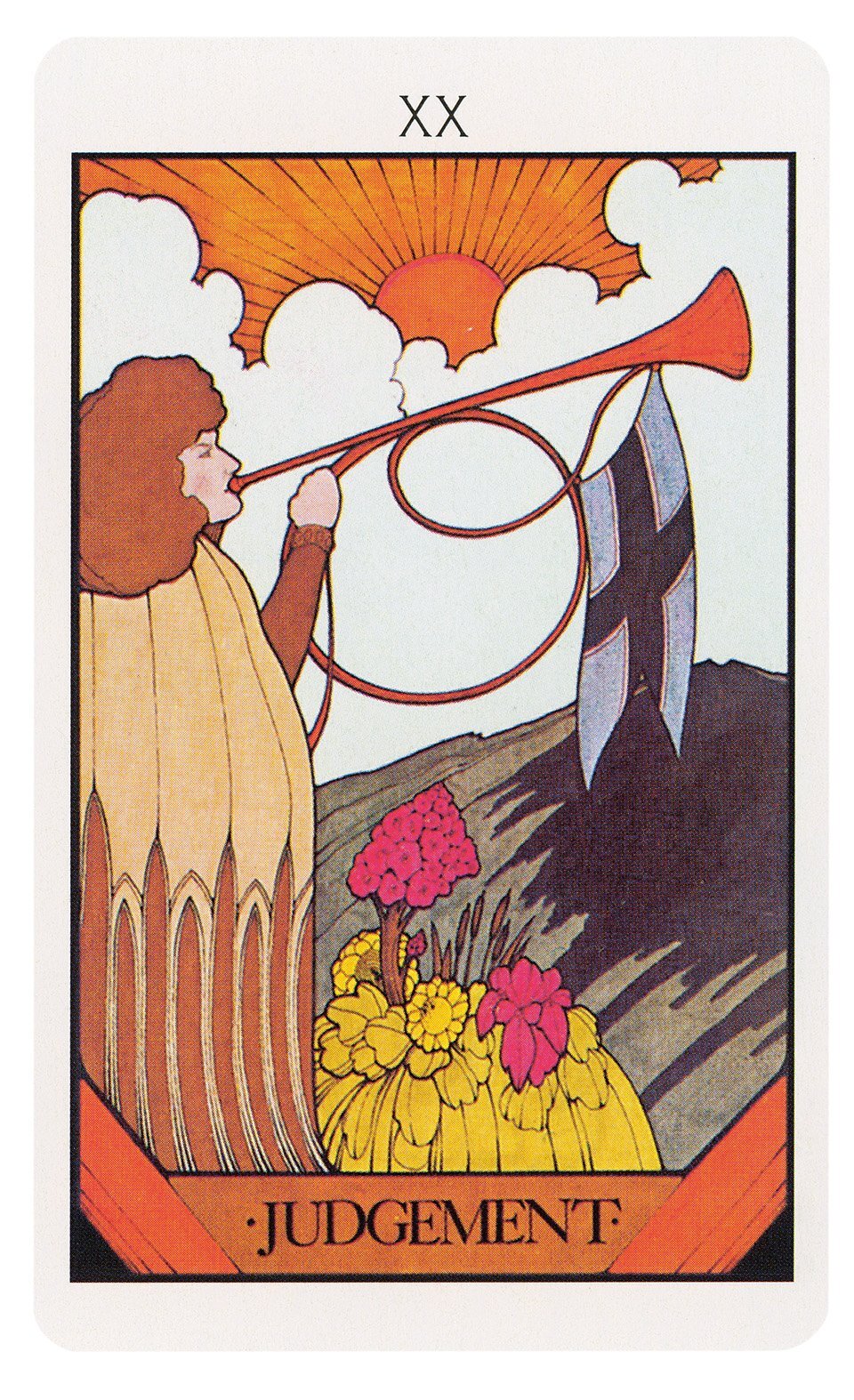Thra is a living, breathing planet. We first went there in the classic 1983 film from Jim Henson and Brian Froud. Returning to Thra in Netflix’s The Dark Crystal: Age of Resistance (2019), a serialised prequel to the original film, we see it immediately: the plants, the earth, the rocks, the Gelflings, Podlings, and all the other creatures are very much alive and interconnected.
This world brings to mind the Gaia theory, formulated by James Lovelock in the 1970s, which proposes that Planet Earth is a vast, self-regulating organism. It’s not too different from the way indigenous cultures—and those with animistic beliefs—regard the planet and our place in it.
Brian Froud has spoken openly about his belief in an interconnected world—and his belief in fairies, often seen as aspects of the divine in an animistic worldview. Brian says his inspiration for fairies originally came from the landscape, from trees and rocks, things he always saw as alive, and encompassing spirit. In an interview, he said: “People often ask me, how do you see fairies? And I say, you don’t see them through the eyes, you see them through your heart … So there’s such a thing as real fairies? Of course there is. They live in those in-between states, between waking and dreaming. In the twilight between light and dark. They are spiritual beings that human beings have lived with, forever.”
Fascinated by Brian’s worldview—and his role in creating The Dark Crystal and Labyrinth—earlier this year, I spoke with his son Toby Froud, who so kindly agreed to a phone interview. You may remember him as the baby in Labyrinth—he’s also an artist in his own right, having worked as a sculptor on several film sets. In Netflix’s Age of Resistance, he was design supervisor, collaborating with a team of creatives to bring Thra back to life.
Elizabeth Kim First I have to ask—you were the baby in Labyrinth—is this first film credit a blessing or a curse?
Toby Froud It’s a blessing. I’ve never considered it to be a curse. I’ve always been honoured that people have loved that movie for as long as they have and that it continues to delight and inspire people. I’m honoured to be a part of it, even though I was, you know, a baby. It’s always been a lovely thing to be a part of. And yes, it did me well in life, I think.
EK So was it always clear to you growing up that you would follow in your parents’ footsteps with the work that you do?
TF Not necessarily, my parents were very supportive of me in whatever I’ve wanted to do, and art just really was the natural thing. Certainly in our house, obviously, and my parents taught me all sorts of things and that was really nice. So, it was a natural progression, but it wasn’t as though they said “you will do art, you will follow in us.” It was absolutely just more of a “whatever you want to do, we will support you,” and it happened to be that I really enjoyed creating things and making things—certainly costumes and puppets, and sculpting things. That was always really my passion and I just continued. But I didn’t come back to the ‘Froudian’ style, I would say, until I was older. I’d left college by then—I went and did a technical arts course at Wimbledon School of Art, and then I went into the industry, but came back to the ‘Froudian’ style on my own. That felt like coming home to me, so that was nice.
EK So coming to The Dark Crystal: Age of Resistance. How much creative influence did you have as design supervisor?
TF I helped guide the look and feel of the creatures and characters. I was always there helping and working alongside the rest of the team. It was the amazing team that put the things together and I was there to make sure it felt right and to make sure that the essence of my father’s designs were were kept true. I did that in LA, and I did a lot of figuring out if the translation of the drawings and designs into physical form when it came to costumes and layers of different things—the sort of fabrics and textures, and the little sculptural elements that would be applied to them. So we made sure that it felt cohesive and the teams worked. That was great and went along that way until we got to London. Then my father was there as well, and we did that together. We worked together to paint the puppets and costumes, or make sure they had enough things on them or that everything had a cohesion in the right way. You know, a good sense about them depending on Gelflings or Skeksis or other creatures of Thra. I went on set a lot to make sure that things looked right for the scenes we were shooting. So, I was all over the place and very much a part of making sure the puppets were feeling right in the process to what you saw on screen.
EK And was that setup with you and your father working together quite a new thing? Or something you’d done as a child?
TF We’d always worked together, in different formats and different ways on a lot of smaller projects. As I’ve gotten older my parents and I have all worked together on little projects but this was the biggest undertaking we’ve ever done together and in a true working environment with a whole team around us. That was the amazing part, that we had a collective of truly talented artists, and we were able to say: “how about this?” and “what do you think about this?” and actually work and play with them and figure things out. That was really exciting. But my father and I work well together, and my mother too. You know—we’ve always worked well as a family. That was a real blessing for us, because we are able to work creatively and also get along as a family.
EK I know that for the original film Jim Henson wanted to build the world and the aesthetic before he wanted to create the story. I’m assuming your dad’s work was the place where it all began. Did you have any kind of input to the narrative of the story?
TF Yes, for the original, Brian and Jim and the whole team spent several years developing the world, researching and figuring out how it was going to look and feel, and then the story emerged from that, and Jim got the idea. But there were all sorts of things that were being created at that point that survived, and now we have a lore. We have a bible of Thra in a way, of what the landscape feels like and some of the history involved.
This time around the script came to us. Jeff Addiss and Will Matthews, the two main writers, came on board and wrote the arc for the series. Then they had a whole team of writers working on episodes with them. So, it started there. We then came in, and they would ask us character questions. Logistical questions: if a puppet or creature needed to move a certain way, could we do that. Or, could we design something that helped the story in this way.
[During] filming we were more involved, making changes along the way. We’d sit and talk to the writers about how we’d achieve something else—changing a Gelfling or making things fit.
EK You mentioned the lore of Thra. I saw your dad speaking about how he and Jim discussed philosophy, spirituality, and religion. Which real ideas from myth, philosophy or folklore went into The Dark Crystal?
TF There are certainly elements of Nordic or Celtic symbolism, of geometrical symbols and ciphers in the design patterns of Thra. They originally looked at different places, but Brian drew from Dartmoor, Devon. You know, the rocks and the landscape around him there, that has been a real source of inspiration. And that’s what Jim found too. Jim really loved that countryside, and that look and the feel was what he wanted.
But for this series, my father didn’t ever look at reference. He just drew from his mind, and that was really fascinating. He’s got a good knowledge of different places and cultures, but it really is its own planet. Louis Laterrier, the director of Age of Resistance came and visited my parents down in Devon, and they took him down to the little river that’s a couple miles from the house, and because it is very beautiful and it has that feel—we say “this is the feeling of Thra. This is what it should feel like,” and Louis loved that. He said, “this is what I want it to feel like,” and so it is drawing from that actual real landscape. This is true for other artists who live around there as well. Certainly, because Brian and Alan Lee did the Fairies book together whilst living in Devon, and Alan still lives there, close to my parents. They all draw from that same landscape.
EK Yes, it is a very magical landscape. I’ve also heard your father talking about how, for him, the entities he draws are kind of real. Could you expand on that a bit, this idea that fairies are real?
TF Yeah, certainly there’s a feeling that fairies are real. To us, they are, and I think they are to a lot of people. When creating, it’s about not getting in the way of what’s trying to come through. Being open to seeing the world and the things around you, beyond what you’d usually think of when you think of the countryside—it’s as simple as that. Not being afraid to go where that leads you when it comes to it. Living in that landscape or walking in hills and nature.
We truly do believe in the things that we create and that’s why we’ve never once put something that’s truly evil out into the world—that’s not the point. You always want something, when you’re creating a character, or creating an idea, that has meaning, that has something else to it. It needs a rounded quality no matter what it is. It can be dark but it shouldn’t just be outright scary. But it’s true with everything that we work on, and that stood with my father very much so through the years.
EK But the Skeksis are terrifying—what’s their redeeming quality?
TF [laughs] They are, yes, they are, and they’re meant to be. They really are true villains, but they are certainly rounded characters and they are in themselves flawed. They can be funny, they can be something else, but they choose this idea of power and certainly are half of the whole that they should be.
EK Right, so the Mystics and the Skeksis are two halves of one whole. Is that inspired by Taoist idea of Ying and Yang?
TF Oh yeah, absolutely! It is all about the idea of balance and what that physical form may look like. It’s something really interesting because, as we all know, we can be unbalanced in one way or the other most of the time, and it’s hard to find that [balance]. The Skeksis and the Mystics have their journeys, they have done so much apart It’s not until they come back together at the end, in the movie, that they find themselves as a whole, and have the full realisation of what they have gone through or put others through. But yes, it’s truly about finding that balance and also for us depicting and showing that in the physical or creative ways that you see in the Dark Crystal.
EK On the topic of balance, or lack of it, many people have praised The Age Of Resistance for its strong message about the climate crisis. I don’t think that’s necessarily unique to the series—this idea of a world out of balance was in the film, too. Would you say that a belief in fairies, or in this case Podlings and Gelflings, might help us see the world in which we are living as something alive rather than something dead to be claimed and exploited?
TF I think so. Yes, certainly the series and the movie contain a lot of those themes. Thra is a living planet, all the creatures and the physical ground, trees, and plants themselves are all connected and that’s what, as humans here in our world, we’ve very much lost. And we’re trying to find it again.
It is about that. A larger portion of us are waking up to the idea that “no, we actually have to protect the planet, and help the planet, and really work together because we are all connected. We can’t live without the planet’s resources or without helping the planet be at its best. Or, we are basically the Skeksis and we are going to destroy it.” That’s what it comes down to.
What you can do and what you can show with fantasy and with puppets is very powerful. We can show, in physical forms, a lot of ideas that are hard to convey with human actors. With creatures, and with fantasy characters and puppets, you’ll sit and go through that experience and hopefully you come away with this feeling and understanding, like “we should change this” or "I can apply this to my life, I can be as strong as a Gelfling. I can stand up, I can be Hup. I can fight for what’s right, I can go on those journeys and have the confidence to actually tackle life in the same way they’re doing in their world and it’s very important to do that.”
EK That’s so true. I think sometimes when you walk through a forest, you forget that it’s alive, but when you watch The Dark Crystal everything is alive and everything is animated.
TF Absolutely.
EK So what can an actor not do that puppets can?
TF I don’t know. Certainly actors can do so much. But I think it’s harder if you’re just doing something with a human. If a bad guy were to drain a human, that would be a really hard thing to show.
EK Yes. It’s terrifying.
TF A Gelfling is hard enough. You react, you have this visceral moment, like “Oh my god, they destroyed the creature/the Gelfling” and you relate to that, so it’s close enough. But you’re able to show something like that without having the gore, without having the gratuitous nature of certain elements. That’s helpful because it means you’ve got the horror of it, but you’re able to carry on and tell a story, and you can tell it to a much wider audience.
With puppets and fantasy characters, you reach more people and younger people too, and that’s the interesting thing. We and Netflix always say that The Dark Crystal lives up to its name, and we’re not scared to show this darkness to kids. Whichever hero you relate to on that quest, you can follow them and go on that journey. You can be scared of what’s to come and experience it and learn that you can survive and work through this. You know afterwards that, yes, you have the power and strength to do it yourself.
EKE: I’ve always liked that about The Dark Crystal. A lot of children’s television and cinema from the past couple of decades has become quite sanitised. Tell me—can we expect a second series? Because I’d really like to know what happens to Deet, and who Jen and Kira are related to.
TF There are so many questions! It’s hard. Certainly the writers know certain aspects and where it is going. We have an arc, we know what’s to come. Whether we get to show it or not, who knows. That’s up to the viewers—it’s up to you guys and it’s up to Netflix!
[The Age of Resistance] was an amazing group effort. The team of creators that was brought together were amazing. The people involved were fans, but they were also amazing artists in their own right, just working to this one goal of creating the best possible puppet show that we could. I think we did that and I’m very proud of everyone involved.
If everyone keeps watching it, then maybe we get a season 2. If people love it enough and people watch it enough, then we will get a second series. We want to tell that story, we feel it’s deserving of it. If you’ve watched it once, turn it on and go to work and leave it running just so it’s watched again.
EK One last question, please. Is Thra real?
TF The magic of Dark Crystal is that it’s its own planet because there are no humans there and that’s made apparent. There are Gelflings, but they aren’t humans—they’re human-like. People have always been excited about the idea of visiting another world. Well, here’s ours. Here’s Thra—it can be a lovely place and it can also be a very dark and very dangerous place. Thra is real. Maybe if we could travel further in space maybe we would come across Thra and experience it, and that’s the beauty of it. ◉
